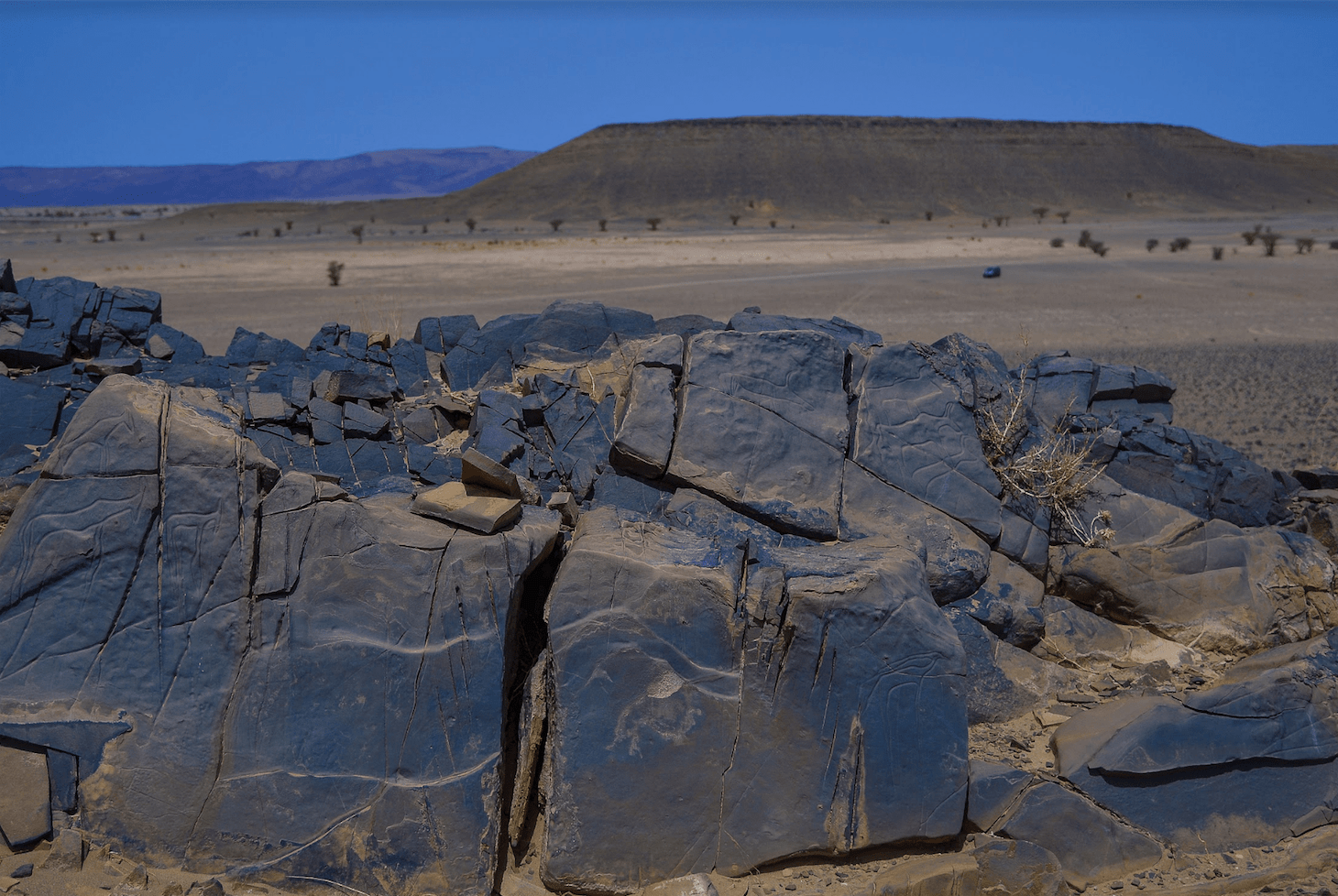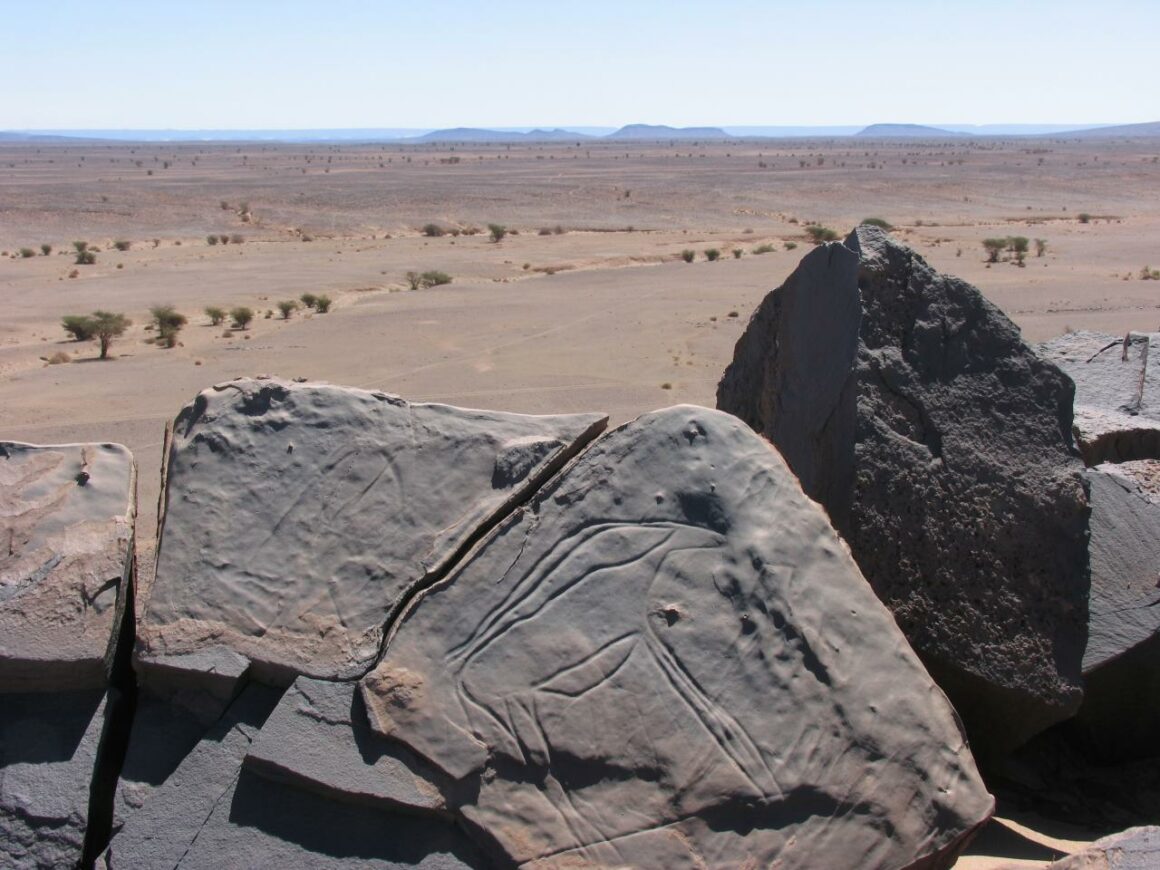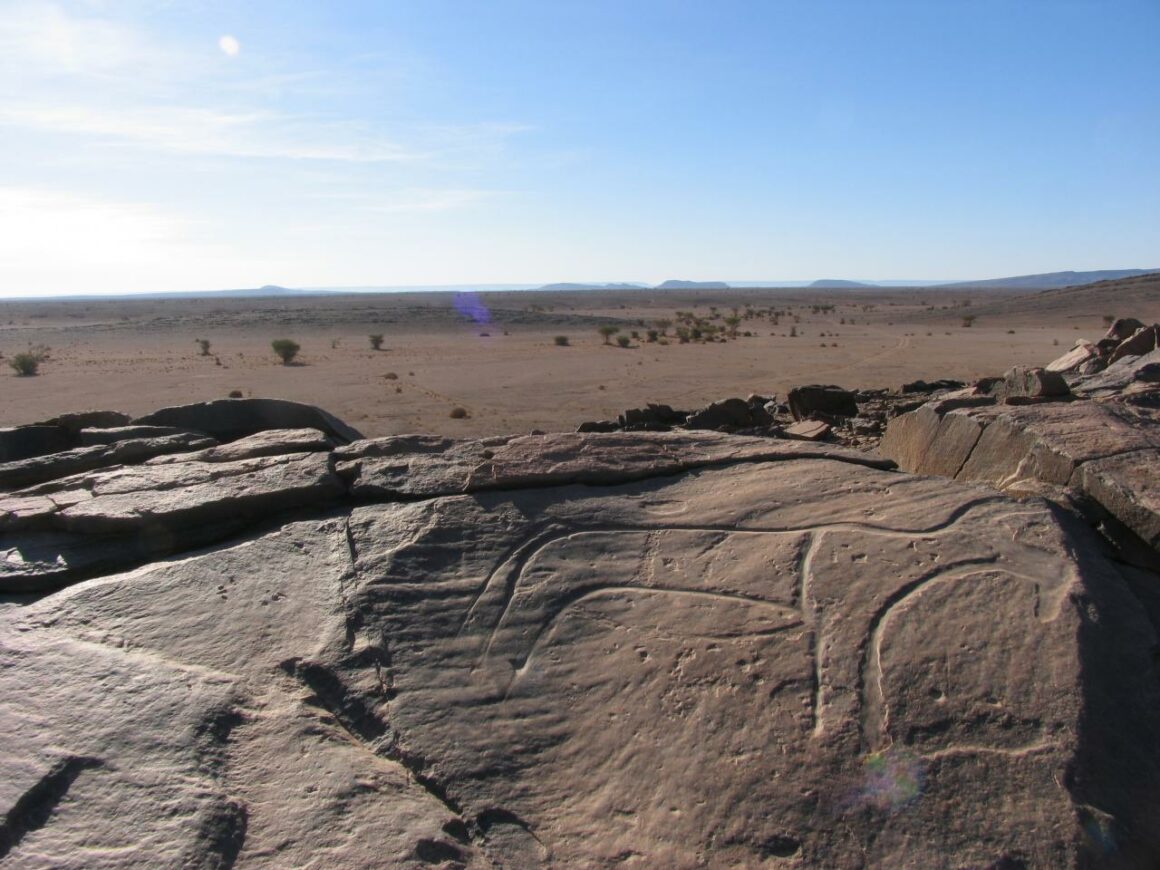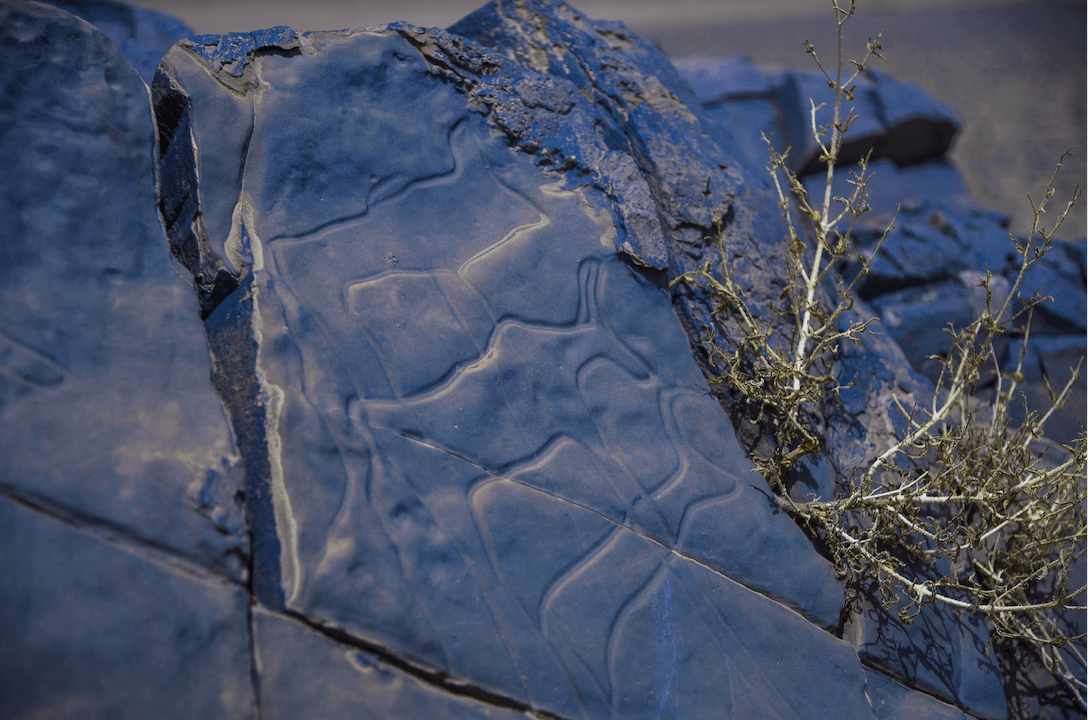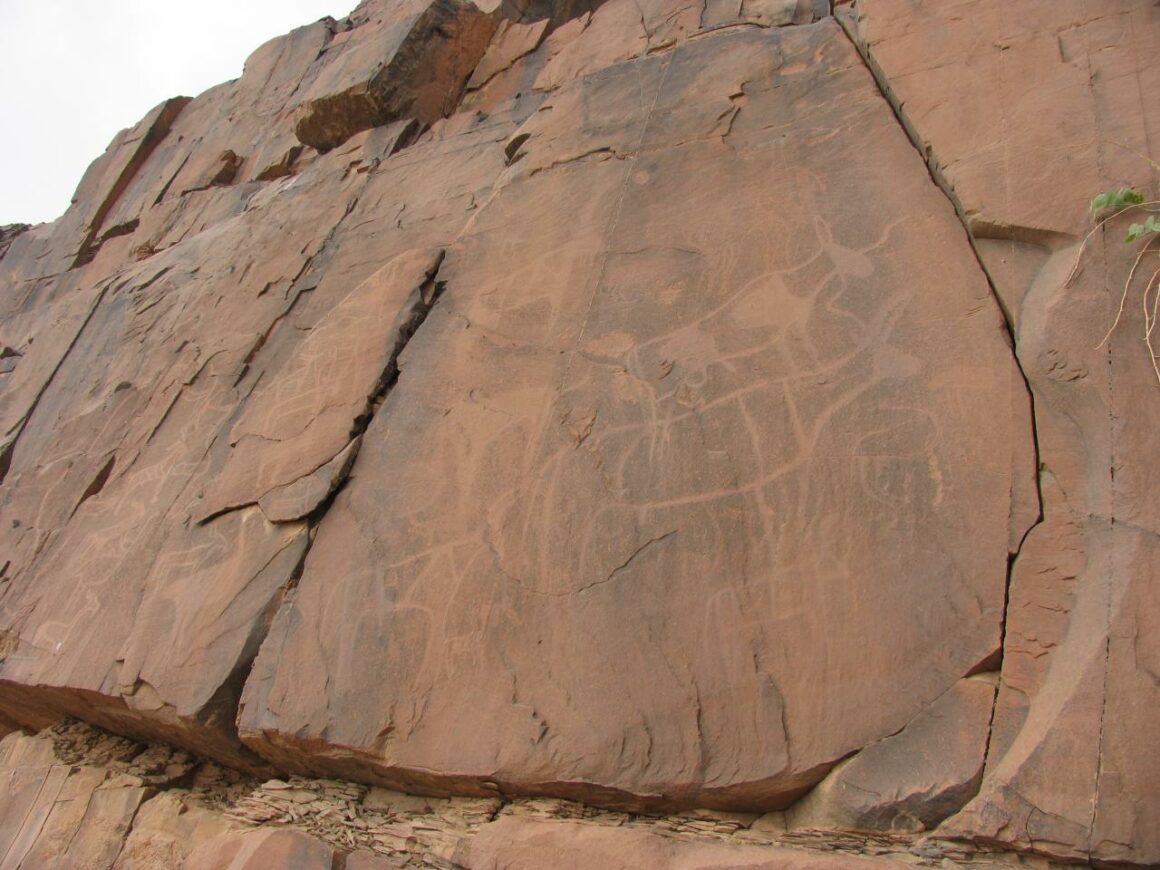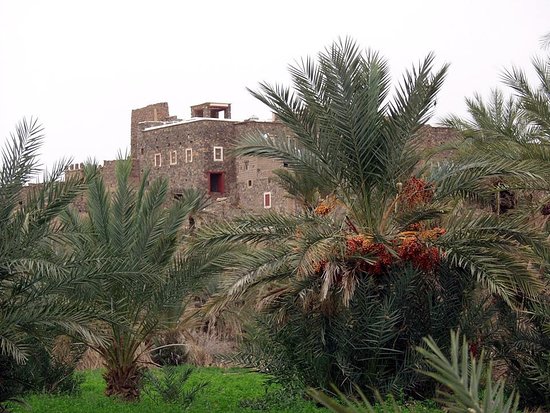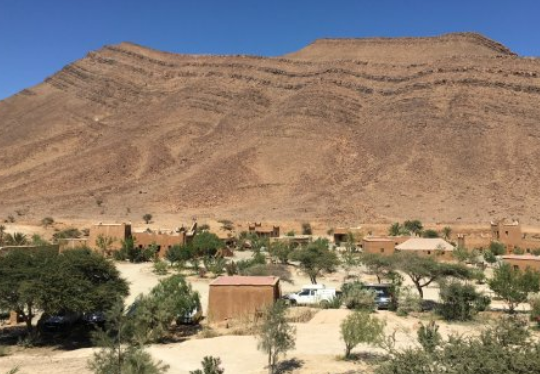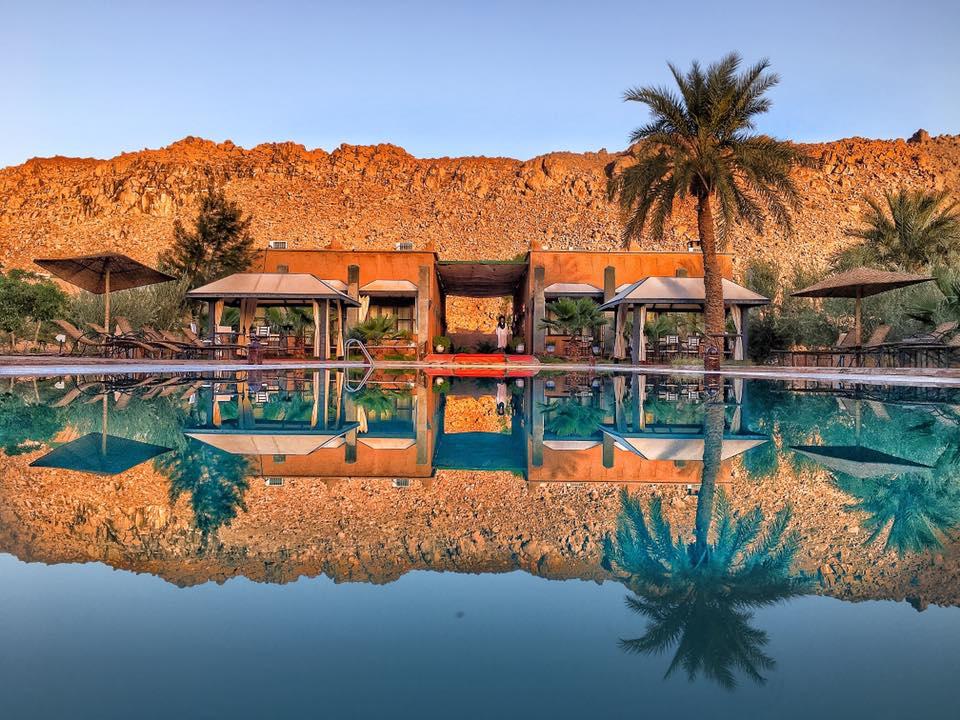Open-air museum – in the heart of Jbel Bani
Journey from Agadir: 3 hours 30 mins / 310 km
The expression “rock art” refers to all works of art (in the broad sense) made by humans on rocks, most often in the open air. This art form occupies a major part of prehistoric art. It is not the result of any particular ethnicity or culture, but must be considered Universal.
You can discover rock art dating back thousands of years on your journey to Jbel Bani.
Rock engravings are a way to discover prehistory. The province of Tata, and more precisely the territories occupied by the Jebel Bani chain and the Oued Draa, contains more than 80 engraving sites. It’s either by walking or asking in the villages you will cross that you will be able to see rock engravings.
In the province of TATA, the rock sites which are most worth the visit are those which are guarded and protected.
- Municipality of Ait-Ouabelli: Aglagal, Tadakoust, Bazt, Taheouast
- Municipality Sidi Abdellah ben Mbark: Metgourine , Tamgrt isardan, Oum El Alek
- Municipality Foum El Hisn: Tighirt, Tircht, Tamlalt, Moumrsal
- Municipality Tissint
Most of the time, rock art sites are areas exposed to the sun and can be found on slopes or ridges facing southwest or northeast. Petroglyphs (punched or polished engravings) are mainly found in areas that are easily accessible, but always elevated from the surroundings.
You will notice different styles of engraving : period of the hunters (representation of all kinds of game), bovidian period (cattle breeding), etc …
To conclude it should be noted that the rock carvings are not the only prehistoric vestiges of the region. The region also contains several sites from various eras of the Stone Age which testify to the existence of man for thousands of years before the appearance of rock art.





